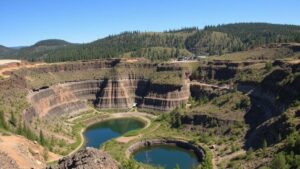How to Use Old Geological Surveys to Pinpoint Forgotten Rich Ore Zones
How to Use Old Geological Surveys to Pinpoint Forgotten Rich Ore Zones
The exploration of mineral resources is a critical aspect of the mining industry, impacting economies and technologies worldwide. Despite advancements in modern exploration techniques–such as satellite imagery and geophysical methods–old geological surveys can offer an invaluable reservoir of information. This article will explore how to effectively utilize these historical documents to identify forgotten rich ore zones.
The Value of Historical Geological Surveys
Geological surveys conducted in the past contain detailed information about mineral deposits, stratigraphy, and geochemical analysis. Importantly, these surveys often provide insight into geological formations that may have been overlooked due to a lack of technological innovation or economic viability at the time.
For example, the United States Geological Survey (USGS) has compiled extensive historical datasets that include maps, reports, and samples which date back to the 19th century. Mining companies may find valuable details within these materials that pertain to ore richness, mineral composition, and geological anomalies.
Identifying Relevant Old Surveys
To pinpoint forgotten ore zones using old geological surveys, its crucial to first identify the most relevant documents. This involves:
- Consulting local geological societies and national archives for survey reports.
- Reviewing historical maps to determine former mining areas and known deposits.
- Identifying surveys that correlate geological features with reported mineralization.
For example, surveys from the Ontario Geological Survey can provide insights into the rich mining history of the Canadian Shield, showcasing lost deposits that modern techniques could rediscover.
Analytical Techniques for Evaluation
Once relevant surveys are identified, various analytical techniques can be employed to interpret the data effectively:
- Geospatial Analysis: Use Geographic Information System (GIS) technology to overlay old geological maps with current land use and zoning information. This enables geologists to visualize potential mineralized zones in the context of today’s geography.
- Geostatistical Modeling: Apply statistical methods to available data to predict ore deposit locations based on historical findings and geological conditions.
A real-world application of these techniques was seen in Nevadas Goldfields, where old geological data combined with modern analysis methods led to the discovery of new gold veins that had previously been undocumented.
Field Validation and Sampling
To ensure the validity of the findings derived from old surveys, field validation is essential. This can be achieved through:
- Conducting targeted sampling in areas highlighted by historical data.
- Useing geophysical surveys to measure potential mineral responses.
For example, selective core drilling based on historical reports has successfully revealed high-grade ore zones previously thought to be depleted in regions of British Columbia.
Integrating Modern Techniques
The integration of modern technology with historical survey data enhances the likelihood of rediscovering rich ore zones. Technologies to consider include:
- Remote Sensing: Satellite imagery can highlight geological features obscured by vegetation or urban development.
- 3D Geological Modeling: Modern modeling can create a three-dimensional view of geological formations that allows for better visualization of potential ore zones.
This approach has been validated in Australia, where integrating old geological maps with advanced modeling uncovered substantial mineral deposits in areas previously deemed unpromising.
Challenges and Considerations
Utilizing old geological surveys is not without challenges. Some individuals may question the accuracy and relevance of this historical data, given changes in mining technology and environmental impacts over the years. To mitigate these concerns:
- Cross-reference historical findings with current geological studies.
- Consult with geologists who specialize in historical mining regions for insights and validation.
Actionable Takeaways
To wrap up, old geological surveys are a treasure trove of information that, when properly harnessed, can reveal forgotten rich ore zones. The key steps include:
- Identify and analyze relevant historical surveys.
- Employ analytical techniques like GIS and geostatistical modeling.
- Validate findings through targeted fieldwork and modern technologies.
By effectively combining the past with the present, mining explorations can uncover new opportunities, leading to sustainable economic growth while minimizing environmental impacts.



